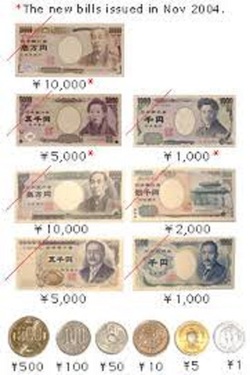

The deceleration was due in large part to government subsidies for utility bills, and if the subsidies are lifted, inflation will likely jump higher. Core CPI in February eased to 3.1%, matching the estimate and sharply lower than the January read of 4.2%, a 41-year high. Japan’s inflation level is much lower than in Europe or the US, but it is well above the BoJ’s 2% target. USD/JPY fell 2.4% last week, when the banking crisis was at its peak.īanking crisis or not, the primary focus of central banks, including the Bank of Japan remains the battle to contain inflation. This boosted the Japanese yen, another safe-haven currency. With the crisis centered on US and Swiss banks, jittery investors turned their backs on the US dollar and Swiss francs, traditionally safe-haven assets. The yen has padded its gains this month courtesy of the banking crisis which triggered panic in the global financial markets. The yen is enjoying a splendid month of March, climbing 4.6% against the US dollar. In the North American session, USD/JPY is trading at 130.17, down 0.55% on the day. Banner photo © Pixta.The Japanese yen broke below the symbolic 130 line earlier in the day, for the first time since February 3rd. The government remains committed to taking firm action against these moves.” However, expectations are rising that US interest rates will remain high as a bulwark against inflation, and as the BOJ shows no sign of backing away from its program of monetary easing, the gap in interest rates between the two countries will make it difficult to halt the yen’s further slide. On October 20, Minister of Finance Suzuki Shun’ichi aimed to stem the yen’s fall by stating: “Excessive volatility in currency markets caused by speculative trading must not be tolerated. Meanwhile, the rising cost of imports is causing food and energy prices to spike, impacting Japanese consumers’ pocketbooks. Speaking at a House of Councillors budgetary meeting on October 19, Bank of Japan Governor Kuroda Haruhiko warned that the yen’s rapid fall risked negatively impacting the Japanese economy and was “undesirable.” Although the government and BOJ remain highly concerned as the currency trends around the ¥150 line, Japan has yet to start aggressively buying yen despite seeing little possibility of the US government adjusting its monetary policy anytime soon.Ī weakening yen was once welcomed by Japan’s automakers and electronics manufacturers for its boost to repatriated profits earned overseas, but as they have moved more of their manufacturing capacity abroad, this impact has lessened. While the yen rebounded to the low ¥140 level immediately following the move, the effect quickly wore off, and the yen has continued to drop in October. The yen’s slide continues despite the Japanese government and the Bank of Japan intervening on September 22 for the first time in some 24 years with a spate of yen-buying and dollar-selling to keep the currency from weaking further. The last time the currency was at this level was in August 1990. The Japanese yen has depreciated at a blistering pace against the dollar over the last several months, falling below the ¥150 level briefly during trading in Tokyo on October 20.


 0 kommentar(er)
0 kommentar(er)
